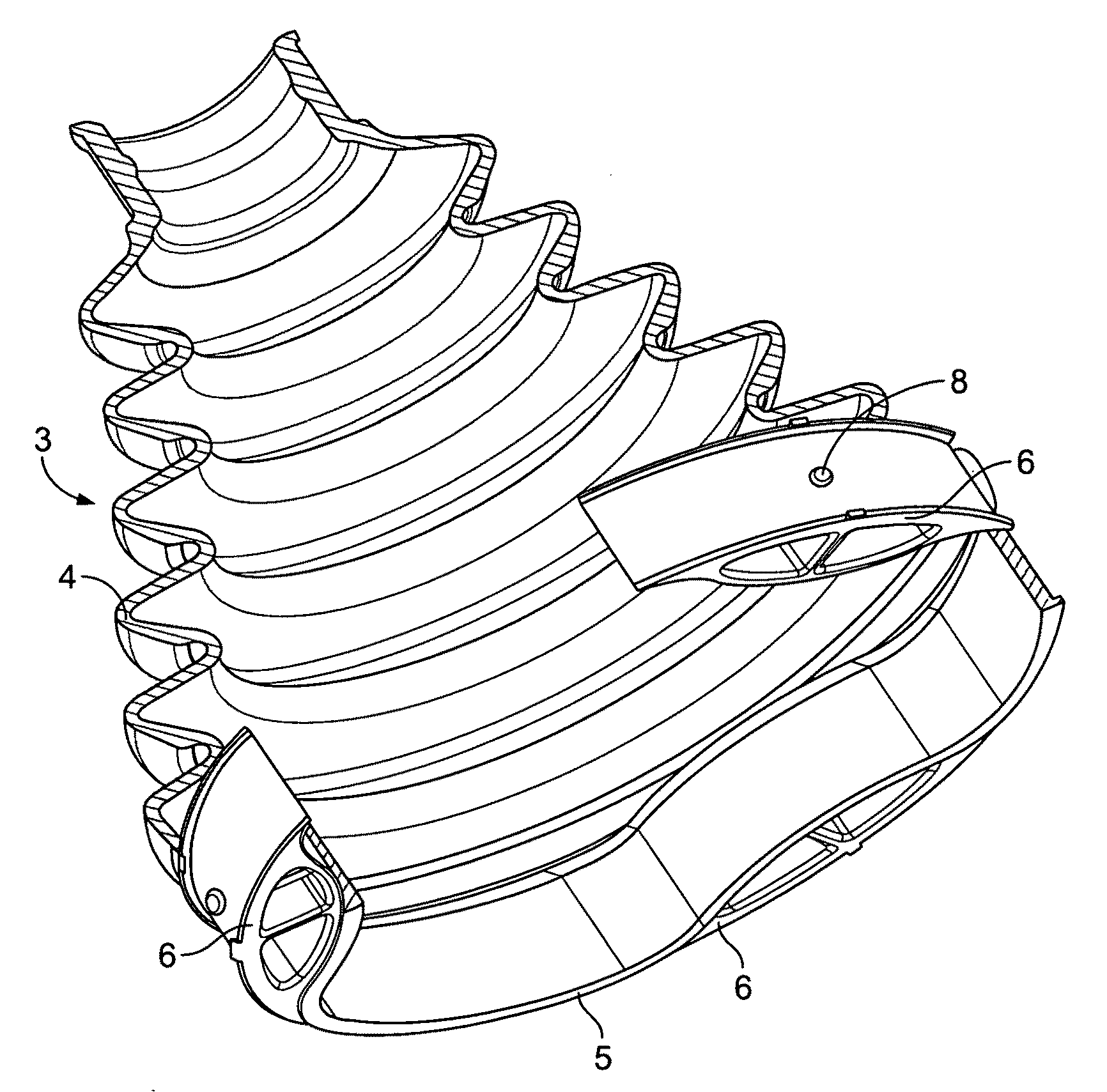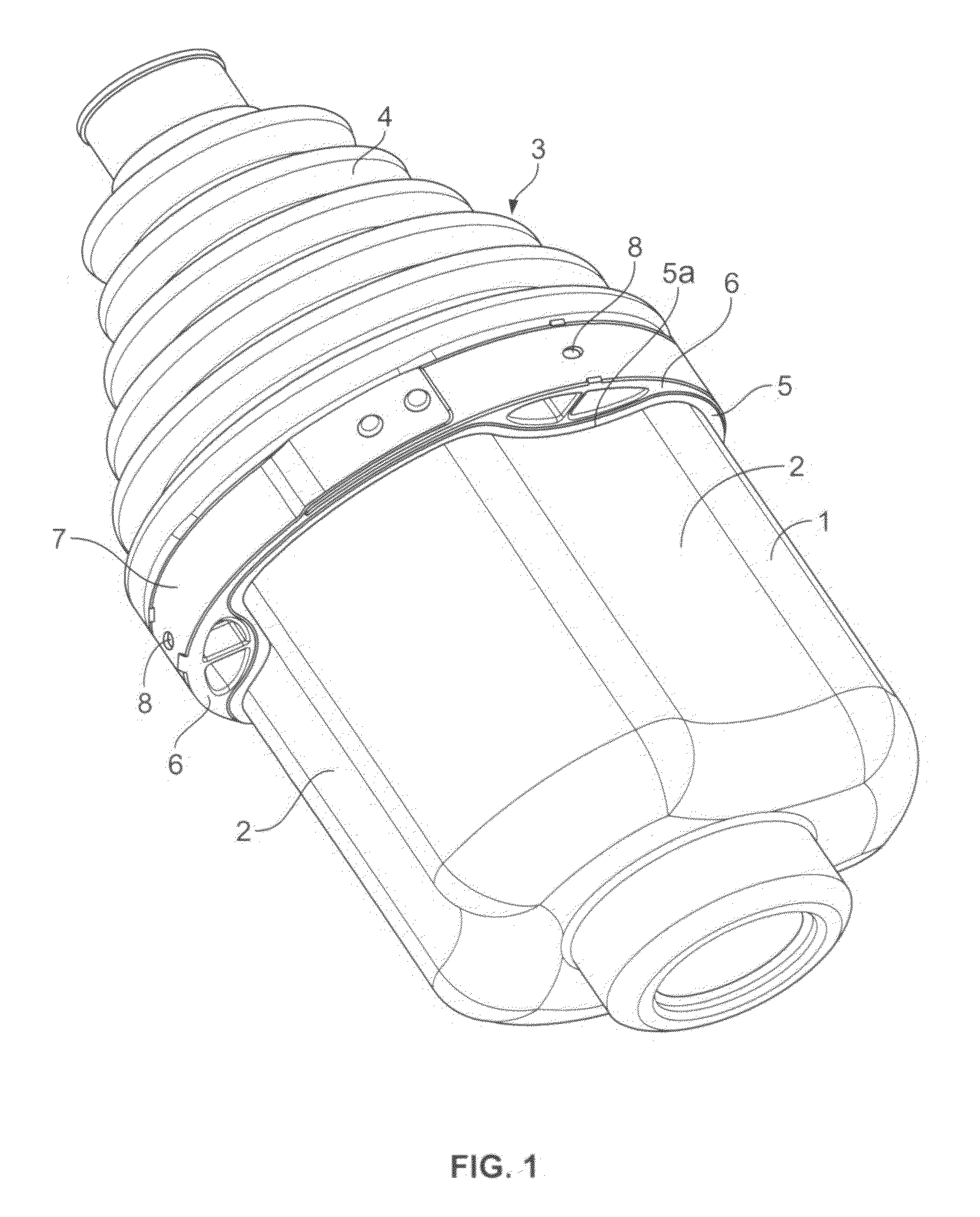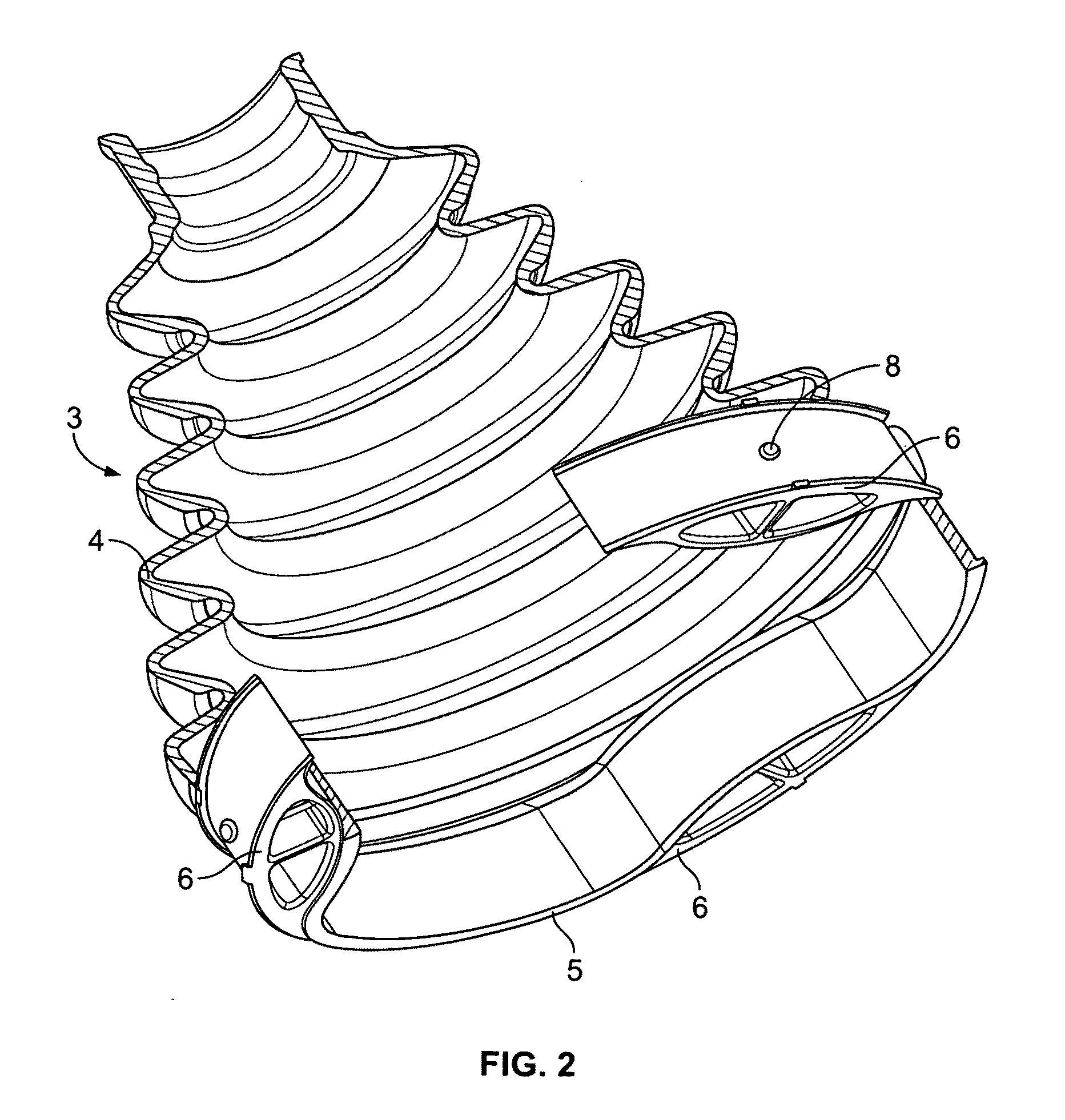Axle boot
a technology for axles and boot covers, applied in the direction of engine seals, shafts and bearings, yielding couplings, etc., can solve the problems of sink marks or void formation, the manufacturing method is no longer possible, and the molding with such pronounced undercuts is destroyed, so as to achieve a more uniform sealing surface and minimize the difference in wall thickness
- Summary
- Abstract
- Description
- Claims
- Application Information
AI Technical Summary
Benefits of technology
Problems solved by technology
Method used
Image
Examples
Embodiment Construction
[0024]FIG. 1 shows a joint housing 1 made of metal for a joint in the drive train of a motor vehicle. The external contour of joint housing 1 includes a plurality of radial recesses 2—three of them in the exemplary embodiment shown in the figure. An axle boot 3 made of a thermoplastic copolyester (TPE) includes an axisymmetric bellows 4 and is used to seal off the joint in the drive train of the motor vehicle.
[0025]A connecting collar 5 of axle boot 3 is designed as a single piece with bellows 4. Connecting collar 5 includes a plurality of indentations 5a projecting towards the inside that are adapted to radial recesses 2 in the external contour of joint housing 1.
[0026]A plurality of compensating pieces 6—three in the exemplary embodiment shown in the figure—are attached to the outside of connecting collar 5, in each case on the outside of indentations 5a. Compensating pieces 6 complete the external contour of connecting collar 5, forming a cylindrical circumferential surface aroun...
PUM
 Login to View More
Login to View More Abstract
Description
Claims
Application Information
 Login to View More
Login to View More - R&D
- Intellectual Property
- Life Sciences
- Materials
- Tech Scout
- Unparalleled Data Quality
- Higher Quality Content
- 60% Fewer Hallucinations
Browse by: Latest US Patents, China's latest patents, Technical Efficacy Thesaurus, Application Domain, Technology Topic, Popular Technical Reports.
© 2025 PatSnap. All rights reserved.Legal|Privacy policy|Modern Slavery Act Transparency Statement|Sitemap|About US| Contact US: help@patsnap.com



